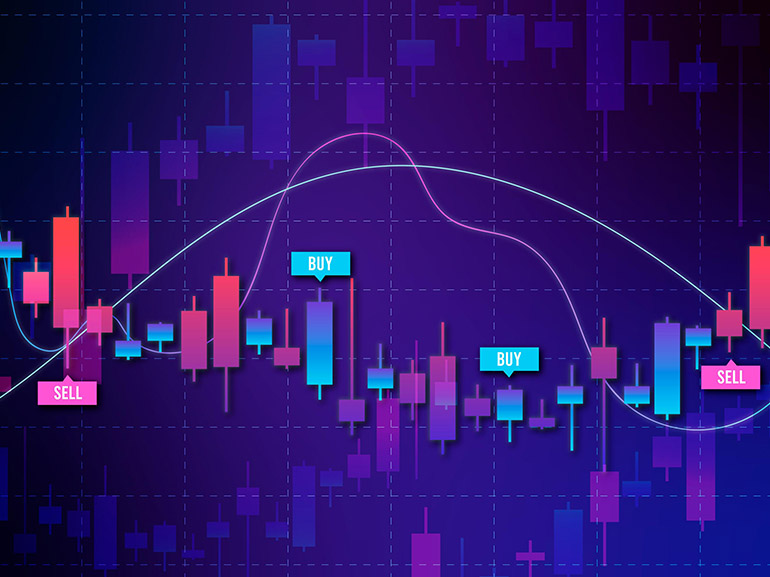Emerging Markets Explained
For traders, emerging markets may present unique trading environments. Their fast-paced economic growth and high volatility periods could make them attractive for short-term speculative trading. Currency fluctuations, commodity price swings, and policy changes can create sharp price movements, offering both risks and rewards.
This article will explore the concept of emerging markets, define their key characteristics, and highlight some of the most significant emerging market economies that traders should watch.

Defining Emerging Markets
Emerging markets are generally defined as economies that exhibit characteristics of both developing and developed nations. They are experiencing rapid growth and industrialisation but have not yet reached the stability and maturity of fully developed markets. Various global financial institutions, such as the International Monetary Fund (IMF), World Bank, and Morgan Stanley Capital International (MSCI), maintain their classifications of emerging markets based on factors like income levels, market liquidity, and economic performance.
Here are some features emerging markets are widely considered to share:
Rapid Economic Growth: Many emerging economies experience higher GDP growth rates than developed nations. This growth is often driven by industrial expansion, increased foreign investment, and a rising consumer base.
Industrialisation and Infrastructure Development: These economies move from being primarily agricultural or resource-dependent to manufacturing- and services-oriented industries. Infrastructure investments in the areas of transportation, energy, and technology can fuel further expansion.
Expanding Middle Class and Consumption: As income levels rise, consumer spending increases, creating a favorable environment for businesses and investors. This expanding middle class drives demand in sectors such as retail, technology, and financial services.
Higher Volatility and Risk: Due to political uncertainties, currency fluctuations, and economic instability, emerging markets are often more volatile than their developed counterparts. This makes them both a high-risk and high-reward proposition for traders. (Source: CFI)
Top Emerging Markets: 2025 Outlook
China
China remains the largest emerging market, presenting significant openings for traders due to its economic fluctuations and government interventions. After a period of slowing growth, the Chinese government introduced a broad economic stimulus package in late 2024 to revive the property market and boost domestic demand. This move mirrored the abrupt policy shifts seen when COVID restrictions were lifted in 2022.
For traders, China’s equity markets could remain attractive in the short term as stimulus measures continue to support growth. While exports have been a key driver, China’s long-term prospects depend on structural reforms and the development of demographic challenges. The government’s ability to sustain growth without further intervention remains uncertain. Traders should monitor government policy shifts, inflation trends, and currency movements, which heavily influence Chinese stock indices like the Hang Seng (Hong Kong 50) and the yuan.
India
India has been one of the top-performing emerging markets, with its stock market significantly outpacing the broader emerging-market index in recent years. Strong domestic consumption, technological advancements, and foreign investment have fueled growth. However, recent high valuations have led to a temporary slowdown, with indicators suggesting possible weakness in the coming months.
For traders, India’s stock indices remain a long-term bullish play, but short-term corrections present tactical trading opportunities. Monitoring earnings revisions, economic data, and policy changes can help traders capture market swings—currency fluctuations in the Indian rupee can also be traded on against the U.S. dollar and other major currencies.
South Africa
After years of underperformance, South African equities have surged following the formation of a business-friendly coalition government in mid-2024. The shift in leadership has boosted investor confidence, leading to improved earnings expectations for 2025. Reforms in key sectors, including energy and infrastructure, could drive further growth.
Traders should watch South Africa’s stock market for cyclical recovery trends. The rand’s volatility, influenced by political stability and external economic conditions, can also be encountered by trading in forex markets. While structural challenges remain, any positive policy developments could trigger further gains. Key shares in South Africa’s natural resources sector include Sasol (SOL.JO) and Gold Fields (GFI.JO), among others.
Emerging vs. Frontier Markets
For traders, emerging and frontier markets offer unique conditions due to their volatility and growth potential. These markets represent economies in different stages of development, ranging from rapidly industrializing nations to smaller, less liquid markets still in their early growth phases.
Emerging markets, such as India, Brazil, and Mexico, are characterized by expanding financial systems, increasing foreign investment, and strong economic growth. Frontier markets, including Kenya, Bangladesh, and Vietnam, are even less developed, with smaller financial markets and higher risk exposure. Traders may be drawn to these markets and decide to integrate related contracts into their portfolios because of their price fluctuations and trading characteristics.
Why Emerging Markets Are Attractive for Traders
Emerging markets offer traders several advantages:
Higher Volatility – Prices of stocks, indices, and currencies in emerging markets can experience large swings due to political events, economic data, or shifts in investor sentiment.
Expanding Financial Infrastructure – While not as developed as mature economies, emerging markets have stock exchanges and banking systems that provide reasonable liquidity for trading.
Influence of Global Trends – Emerging markets are sensitive to global economic conditions, commodity price fluctuations, and central bank policies, which traders can seek opportunities by tracking macroeconomic trends.
The Higher Risk-Reward Potential of Frontier Markets
Frontier markets, while riskier, offer the potential for even larger gains. These markets typically have smaller stock exchanges, less liquidity, and fewer institutional investors. For traders, this means:
Greater Price Swings – The lack of liquidity in frontier markets can lead to exaggerated price movements, which can be both an opportunity and a risk.
Increased Political and Currency Risks – Weak regulatory frameworks and currency instability mean traders must carefully manage their positions.
Lower Correlation with Global Markets – Frontier markets tend to move independently of major economies, making them a potential hedge in diversified portfolios.
Strategies for Trading in Emerging Markets
As detailed above, the highly volatile nature of many developing economies can offer opportunities and potential drawbacks to traders looking to gain exposure to these nations’ markets. However, as with all facets of the trading arena, the careful crafting of personal strategy is essential. Let’s take a look at some ways traders approach these growing players in the global economy:
Trend Following: Emerging markets often experience rapid economic growth, creating strong trends in stock indices, currencies, and commodities. Traders can seek opportunities on these trends by identifying upward or downward momentum using technical indicators like moving averages and trendlines. Staying informed on government policies, trade developments, and sectoral performance can further enhance trend-following strategies.
Risk Management: Due to the volatility of emerging markets, implementing strict risk management is crucial. Traders should use stop-loss orders to limit downside risk and avoid holding excessively large positions relative to their capital. Based on volatility assessments and personal risk tolerance, proper position sizing can help limit excessive exposure.
Macroeconomic Analysis: Tracking macroeconomic data such as GDP growth, inflation rates, and interest rate decisions helps traders anticipate market movements. A strengthening economy with controlled inflation often signals bullish trends, while rising interest rates or fiscal instability can lead to depreciation in local assets and currencies.
Sector-Specific Trading: Certain industries within emerging markets outperform others. For example, India’s technology sector and South Africa’s mining industry attract significant investment. Traders may consider high-growth sectors, leveraging economic reports and earnings data to identify entry and exit points.
Using Leverage Wisely: Leverage magnifies gains but also increases potential losses. Traders should use leverage cautiously, ensuring they maintain sufficient margin to withstand market fluctuations. Understanding margin requirements and avoiding over-leveraging can prevent unnecessary liquidation.
Popular Emerging Market Instruments for Traders
Traders looking to get exposure on emerging markets have a variety of instruments to trade, each offering unique opportunities and risks.
Stock Index Futures: Major emerging market indices provide broad exposure to high-growth economies. The Global Emerging Markets Index (FMEN) tracks stocks from key emerging economies, allowing traders to focus on markets with strong growth potential. These indices tend to be highly liquid.
Forex Pairs Futures: Currency volatility in emerging markets presents unique trading conditions. Currency pair Futures can experience frequent price swings driven by inflation, interest rate decisions, and geopolitical events.
Commodities Futures: Emerging markets are major producers of oil (CL), copper (HG), and agricultural goods like coffee (KC), corn (ZC), and wheat (ZW). Demand for these resources drives price movements, particularly when global supply chains or economic policies impact commodity markets.
ETFs: Exchange-traded funds like iShares India 50 (INDY) and iShares China (FXI) track country-specific trading, allowing focus on the ups and downs of a specific emerging market’s economic dynamics.
Conclusion
Emerging markets present both opportunities and substantial risks for traders. While rapid economic growth and volatility can create profit potential, these markets are also prone to political instability, regulatory changes, and currency fluctuations that can lead to sudden losses. Navigating them successfully requires caution, thorough research, and disciplined risk management. Traders should stay informed, adjust strategies as conditions evolve, and use protective measures like stop-loss orders and diversification to mitigate risk and safeguard their capital in unpredictable environments, although positive trading outcomes can never be guaranteed.
Ready to explore the potential presented by emerging markets? Start trading Emerging Markets with Plus500’s Futures.
Emerging Markets FAQs:
What makes emerging markets potentially attractive for traders?
Emerging markets offer high volatility, rapid economic growth, and expanding financial infrastructure, creating potential for short-term speculative trading.
How do emerging markets differ from frontier markets?
Emerging markets have larger, more liquid financial systems, while frontier markets are smaller, less developed, and pose higher risks due to limited liquidity and weaker regulatory frameworks.
Which sectors in emerging markets provide the best trading opportunities?
High-growth sectors such as technology in India, mining in South Africa, and manufacturing in China offer trading potential due to economic expansion and investor demand, but these trends could be reversed in the future, and positive trading outcomes can never be guaranteed.








